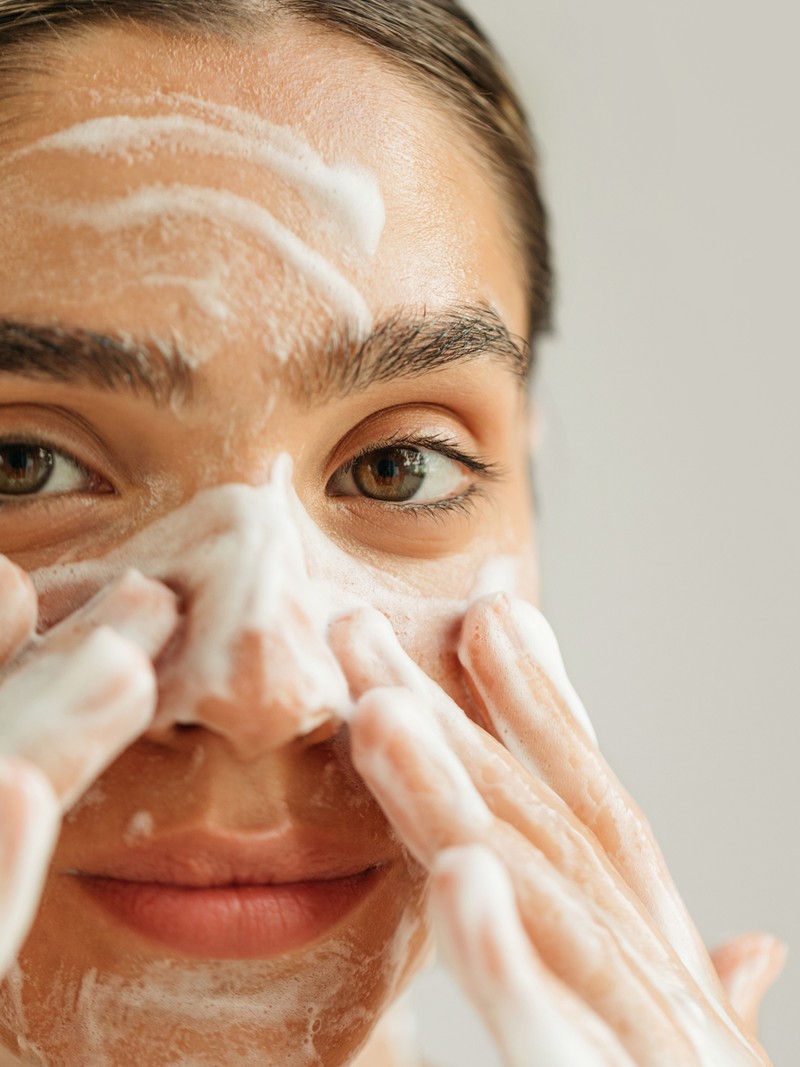
How To Handle Hormonal Acne
First, Determine Whether Hormones Are Actually The Cause
“Hormonal acne is caused by hormonal imbalances which prompt the skin to produce excess sebum, a waxy substance secreted by sebaceous glands. This sebum clogs pores, resulting in painful cysts and whiteheads on the lower half of the face, commonly affecting the jawline, chin, back and chest. The location of your breakouts helps differentiate between hormonal and bacterial acne, the latter of which tends to appear on other areas like the forehead, cheeks and nose, and doesn’t present itself as deep, angry-looking cysts. Typically, hormone-driven acne can arise during puberty, pregnancy and menopause – the times when your body experiences hormonal fluctuations.” – Joanne Evans, facialist & founder of Skin Matters
Understand What Different Hormones Can Do
“Cortisol increases inflammation and oil production, while reducing immunity and skin’s ability to repair. Low progesterone disrupts sleep, affects mood and PMS, and can cause sugar cravings and skin flare-ups. High oestrogen increases histamine release, redness, sensitivity and inflammation. High testosterone increases oil production. Low oestrogen throws off the balance so testosterone increases. It also thins and dries the skin and reduces circulation, impairing healing. Low thyroid affects weight and metabolic function, with low metabolism slowing down energy production needed for the skin to heal.” – Dr Terry Loong, integrative skin & hormone doctor
Keep Your Routine Consistent
“The skin produces thicker sebum when it’s dehydrated and inflamed, so barrier repair is really important for minimising transepidermal water loss. Keep it simple with a creamy cleanser, an anti-inflammatory serum containing niacinamide and hyaluronic acid, and a lightweight moisturiser. Mature skin that is slightly drier and thinner may need a richer cream.” – Terry
Pay Attention To Skin Type
“Salicylic acid can be really effective at reducing swelling, redness and unclogging pores. But it’s better for oilier types and can be incorporated into your routine in the form of a clay mask once a week. Those with dry, sensitive skin can benefit from a calming sheet mask.” – Terry
Avoid Common Triggers
“Typically, high sugar, dairy, gluten and caffeine can worsen hormonal acne. I don’t believe in restrictive diets – our bodies should be able to handle changes in food – but I normally start my patients on a short elimination diet to see if the skin responds, while also checking for nutrient deficiency and overall gut health, both of which can present themselves as acne. Stress is a big contributor, not only directly on the skin but also indirectly – some less healthy coping mechanisms like smoking, drinking and binge eating can all worsen your skin.” – Terry
Explore All Your Options
“There is a place for medication and for many people it can really help. The patients I see have gone down the traditional medical route and it has not worked for them, so we look at alternatives. What I find, if medication is not working, is traditionally practitioners continue with it and don’t look into other potential causes, which is where problems can arise. Antibiotics, for instance, can cause digestive problems and bowel changes; the pill can cause nutrient deficiency, leaky gut, increased inflammation and actually mask a hormonal problem, which can come back in a vengeance when you come off it. Roaccutane – one of the common prescription medications used to treat acne – can cause dry skin, liver problems, mental side effects, nausea and low energy. I love the integrative approach because it helps women to understand their bodies, skin and health so much better, giving them tools to support their skin in the different seasons of their life.” – Terry
Seek Out The Right Ingredients
“Niacinamide has antioxidant properties to help treat and reduce the inflammation and redness associated with hormonal acne. I’d recommend going for this over vitamin C, which can actually feel overstimulating. Glycerin, a humectant produced from rapeseed oil, helps soften and deeply hydrate. Lactic acid is my favourite liquid exfoliant – it’s not too strong and helps formulas penetrate more effectively. But make sure you don’t overdo it. Gentle exfoliation is key. Retinol should be balanced with adequate hydration in the form of a hyaluronic acid serum or booster. If your skin becomes dry or sensitive, use retinol less regularly, otherwise it can ruin your skin barrier.” – Joanne
Never Pick Your Spots
“Hormonal acne tends to appear as hard, red boils which become more inflamed if picked. It’s best to leave these alone and dry out the surrounding area. Throughout my career, I have seen a great deal of scarring caused by picking.” – Joanne
Focus On Calming Inflammation
“Choose products that will strengthen and support your skin barrier rather than over-cleansing. Masks will repair and heal, I recommend Environ’s clay version as it’s very gentle and you can sleep in it. If the hormonal lumps are sore, or even throbbing, dab a pea-sized amount of ibuprofen gel on the area to ease inflammation.” – Joanne
Have An SOS Product On Stand By
“If you have a particularly angry spot, it’s useful to keep a ‘skin saviour’ product on hand. A soothing sensation is what I had in mind when I created the Skin Matters Calming Gel. Full of pH-balancing ingredients like NAD+, panthenol and Alpaflor, the balm-to-gel formula encourages cellular-level healing, can be used safely on sore and sensitive skin, and won’t exacerbate inflammation.” – Joanne
Think Beyond Topical Skincare
“It’s so important to get to the root cause of hormonal acne. If you can, have your bloods checked to see if there are any underlying issues with your hormones. Additionally, essential vitamins (especially D) and supplements such as Advanced Nutrition’s Accumax and Clear Skin Biome support your skin from within. For an added boost, I rate Dermalux LED Phototherapy as it uses a combination of blue, red and near-infrared wavelengths of light to help strengthen and repair the skin.” – Joanne
Follow @DR_TERRY_ & @JOANNEEVANSSKINMATTERS
SHOP THE PRODUCT EDIT
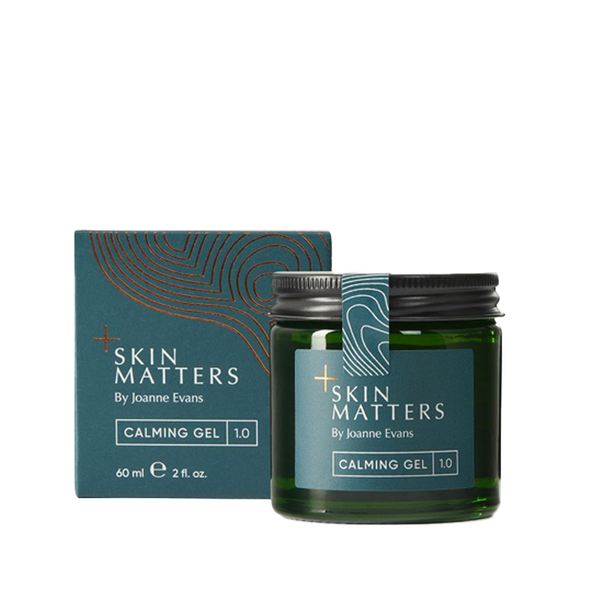
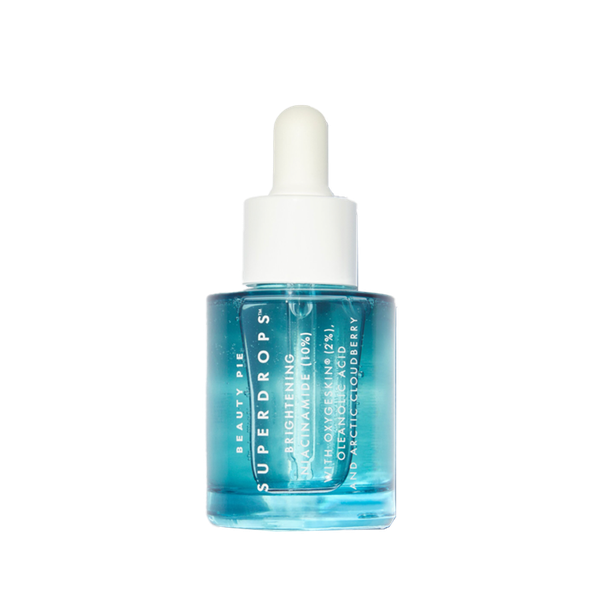

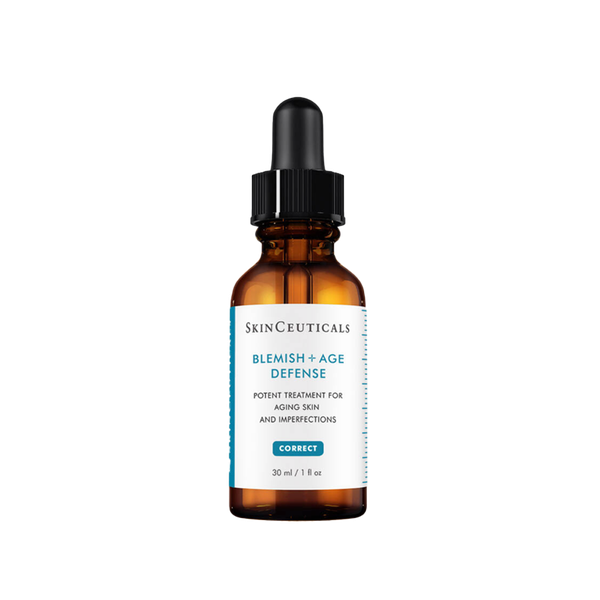
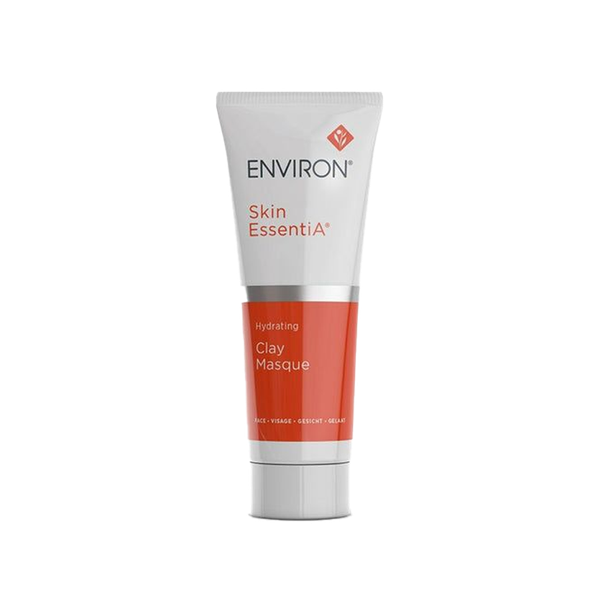


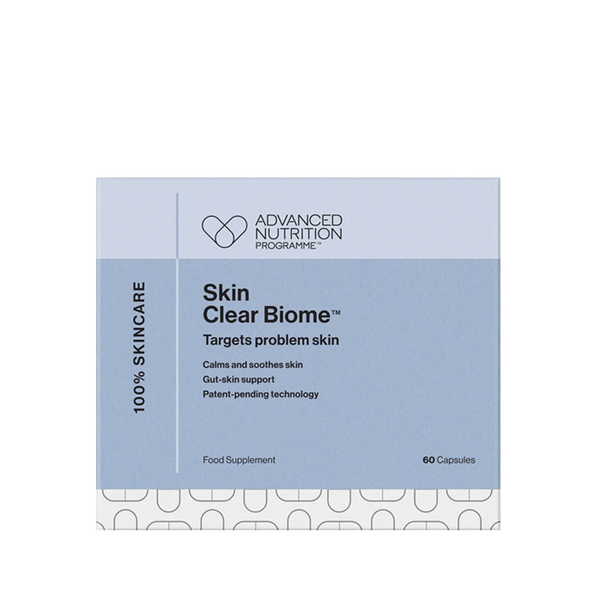
DISCLAIMER: Features published by SheerLuxe are not intended to treat, diagnose, cure or prevent any disease. Always seek the advice of your GP or another qualified healthcare provider for any questions you have regarding a medical condition, and before undertaking any diet, exercise or other health-related programme.
DISCLAIMER: We endeavour to always credit the correct original source of every image we use. If you think a credit may be incorrect, please contact us at info@sheerluxe.com.

